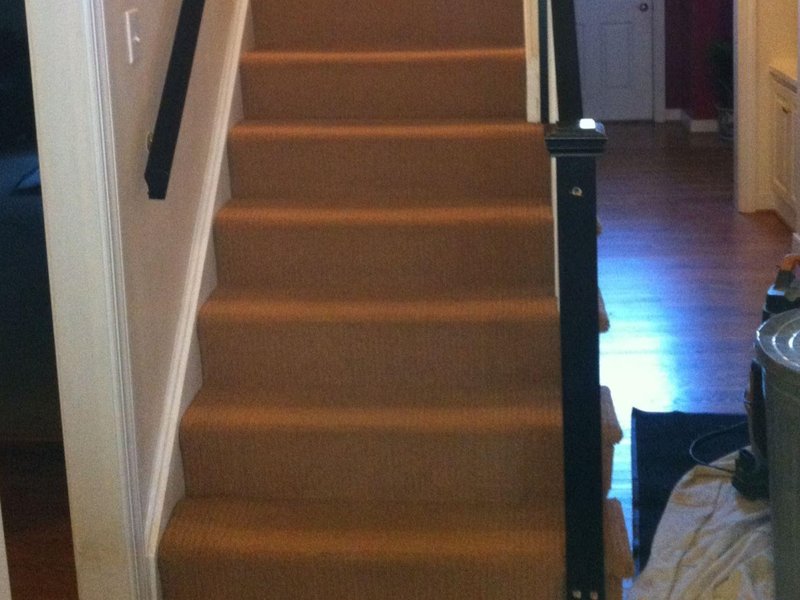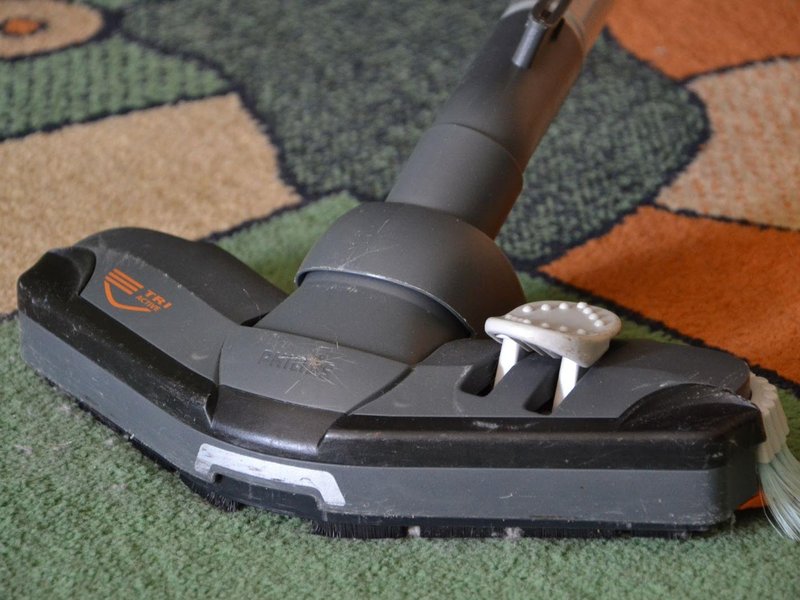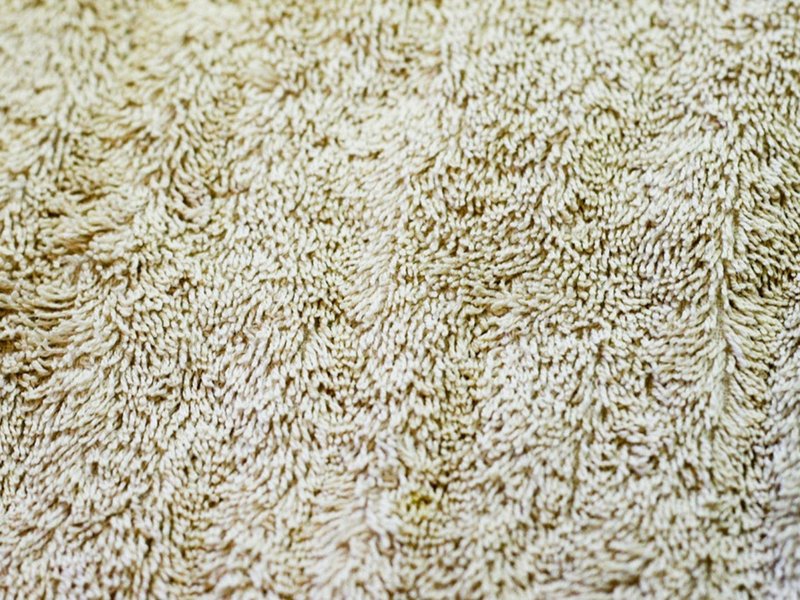Remodeling your home with new flooring is a big decision, and you want to enjoy it for as long as possible. For many customers, longevity is a primary concern. After making a substantial investment, the last thing you want to worry about is when you’ll have to do it all over again.
Carpet, especially in the form of an area rug, is one of the most popular home flooring options, highly regarded for its comfort and laid-back, yet luxurious aesthetic. However, due to its softer texture, many homeowners find themselves asking, “how long will a carpet last?”
In this article, we’ll break down how the number of years you can expect from your carpet and some steps you can take to extend its lifespan.
Factors that Contribute to Carpet Lifespan
Since there are a huge number of factors that contribute to carpet wear, the average lifespan is broad, between 5 and 15 years. Your carpet’s lifespan is highly dependent on the use that you put it through, as well as how well you take care of it.
Instead of “wearing out,” carpet will usually “ugly out” first. Typically, there needs to be at least a 10% loss of fiber within five or ten years for the warranty to cover a carpet wearing out. Technically, most synthetic fibers will not wear out but will mat or soil. Matting is caused by heavy foot traffic, improper carpet care, and improper cushioning. Soiling, unlike staining, is not necessarily caused by spilling something but is often caused by dirt and grime. To ensure your carpet will not “ugly out,” it is best to consider the Fiber Type, Density, Pile Height, Foot Traffic, and Maintenance when making your choice.
Above all, the quality and workmanship that went into your carpet will also determine its longevity. By investing in high-quality carpets, you’ll be assured that you’re receiving a product that’s built to last.
Carpet Fibers Used
The material used in the construction of your carpet plays a major role in your carpet’s longevity. Typically, there are four main types of fibers used:
- Nylon: Nylon is used in up to 90% of residential carpet installations, and is primarily chosen for its impressive durability. Nylon can last upwards of 15 years, making it one of the longest-lasting types of carpet.
- Olefin: Olefin, or polypropylene, often considered to be synthetic wool, is another durable carpet fiber used in many commercial applications. It has a slightly shorter lifespan but is also more affordable.
- Polyester: Polyester is often chosen for its ability to hold vibrant carpeting colors and patterns, but its softness makes it susceptible to matting.
- Wool: Natural wool is a premium material used in many higher-end carpets. It is expensive, and durable and if properly cared for, it can have a long lifespan.
Carpet Density
The physical construction of the carpet can also have a tremendous impact on its expected lifespan. Two specifications are particularly important: density and twists per inch. In general, the greater these values, the higher quality the carpet will be.
When a carpet has a higher density, tufts are grouped closer together, preventing signs of wear from occurring as frequently. Additionally, a carpet with a higher number of twists per inch will better resist excessive wear and breakdown. For best results, choose a carpet with 3.5-6 twists every inch.
Pile Height
Pile height refers to the length of the individual carpet fibers, as well as how they are cut. With high-pile carpet, the fibers are much softer and looser, allowing for greater comfort and play. Low-pile carpets are cut closer to the carpet padding, meaning they’re more rigid and coarse.
Generally, the softer and longer a carpet fiber is, the more prone it will be to damage, and the shorter the lifespan it will have. For example, high-pile Berber carpets are exceptional for the soft feel they provide underfoot, but they won’t last nearly as long as a high-density low-pile carpet.
Carpet Padding
Carpet padding can also affect the life of your carpet; the thicker and firmer the padding, the less give and wear your carpet will experience. But how long does carpet padding last? Carpet padding can last up to 25 years. However, the most popular bonded foam-based carpet padding lasts only around 10 years. Eventually, particularly in high-traffic areas, carpet padding can degrade just like the carpet above. Be certain to choose carpet padding that has a declared life that is slightly longer than that of the carpet.
Amount of Use
For obvious reasons, the frequency in which your carpet gets used impacts how long it will be good for. Foot traffic may seem like a minor factor, but over time can greatly impact your carpet’s appearance. This is especially a concern in high-traffic areas that see repetitive wear every day.
The indicators of wear start small, normally near entranceways and hallways. Over the years, they’ll eventually compound to cause more noticeable damage that needs replacing.
Maintenance
Routine preventative maintenance is the key to extending your carpet’s lifespan. If the carpet is ignored, all of the dirt and grime that builds up every day will simply stay in the carpet, eventually leading to permanent staining that can be tough to remove. In this instance, the carpet will likely need replacing to remain visually acceptable.
A carpet that is well cared for and cleaned regularly is far more likely to reach its maximum lifespan.
How Long Does Carpet Last in a Home?

As discussed, there are several different factors that determine how long a carpet will last. In homes with typical residential traffic, you can expect anywhere between 5 and 15 years of consistent use without much wear.
At the 10-year mark, however, you will start to notice typical damage like staining, matting, and fading. This is the time to start considering a replacement.
Source: Angi.com (Article: How Long Does Carpet Last? 7 Signs You Need to Replace It)
How Long Does Apartment Carpet Last?
Apartment carpets are subjected to a different set of rules than traditional residential carpeting. For starters, some landlords replace carpets with every new tenant to reduce potential repairs that might be required once a tenant has moved in. In places with a high turnover rate, this can be as frequent as once a year.
Assuming that the carpet has been kept in perfect shape, rental-grade carpeting has an expected lifespan of 5 years. This type of carpeting isn’t manufactured with as much longevity in mind as a residential home, so it will need to be replaced more frequently. If a tenant has pets in their apartment, this lifespan could be reduced even further.
Source: Roofstock (Article: What Is The Average Life of Carpet in a Rental Property?)
How Long Does Inexpensive Carpet Last?
Cheap and low-quality carpets, often referred to as “apartment grade”, have a significantly lower lifespan than more premium carpet types. This flooring will last anywhere from 1-5 years before it needs replacing. Wear is extremely noticeable on cheaper carpets, and problems can quickly escalate. Problems like tearing and running are experienced much more frequently and lead to replacement.
How Long Does Carpet Last on Stairs?

Stairs are one of the high-traffic areas of your home that receive a lot of wear. Carpet is installed at a bend on stairs, making it less structurally strong and susceptible to loosening. People also tend to step heavily as they go up and down stairs, contributing to harsher use.
While your carpet installer may have put in stair carpeting at the same time as the rest of your house, this is one of the first areas that will need repair attention. You can expect the stairs to last anywhere from 7-10 years, about 5 years shorter than the rest of your carpet.
How Long Does New Carpet Smell Last?
As exciting as a new carpet installation is, you’re probably not thrilled with the lingering smell that permeates your home afterward. This smell is due to volatile organic compounds (VOCs) found within the carpeting and carpet padding. However, carpet has some of the lowest VOC amounts of any home remodeling material, so you don’t have to be concerned about safety.
After an installation, it’s recommended to run fans and open the windows when the weather allows. This will allow the smell to dissipate faster. On average, it will take 48-72 hours before the smell is completely gone. If after this time, the smell is still noticeable, consider sprinkling baking soda on your carpet and vacuuming it up for a fresh scent.
Source: Today's Homeowner (Article: New Carpet Smell: Is it Safe? And How to Get Rid of It.)
3 Ways to Maximize Carpet Longevity
When properly cared for, your carpet should have no difficulty reaching its maximum lifespan of 5-15 years. You’ll just need to put in effort towards maintaining it and addressing issues as they arise. Here are three simple things you can do to greatly increase your carpet’s lifespan.

Clean Regularly
Establish a cleaning cycle. Regularly use a vacuum cleaner on your carpet to suck up any loose dirt and debris that gets stuck in the fibers. This should be done at least once a week. More thorough deep cleaning should be done at least once a year. This entails shampooing your carpet yourself or hiring a professional cleaning service.

Address Stains Immediately
When stains are left to soak into the carpet, they quickly turn into permanent discoloration and liquid damage. As soon as you notice a spill, clean it up. Always blot the spill, as wiping will smear the stain more. Addressing spills early will also prevent any liquid from getting under the carpet, leading to bigger structural problems.

Move Furniture Often
The heavy weight of your home’s furniture can cause lasting indentations in the carpet. If left in these fixed positions permanently, your carpet won’t be able to recover. To mitigate this, consider shifting furniture alignment often or rearranging your living space entirely to create new wear patterns.
You can also consider using furniture coasters to disperse the weight of furniture and prevent indentation damage caused by persistent and concentrated weight pressing on a small area.
Enjoy Long-Lasting Carpeting Today
Carpets can be a long-lasting flooring solution for your home when taken care of. With the proper products, care, and maintenance, you can easily enjoy your new carpet for a decade or longer.
At Carpet Corner, we have the premium selection of quality carpets you need for a lasting installation. Check out our entire collection today and get your remodel started.

